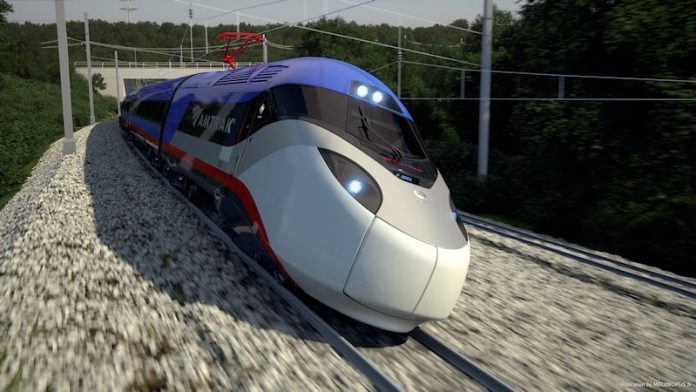The Amtrak Cascades tragedy provided an opening for a certain troll-in-chief to promote his infrastructure plan. If the Republican infrastructure plan–which at one point proposed eliminating Amtrak service to 220 cities–was worth the paper it was written on, this could have been excused. It’s not though, and urbanists should respond with a real infrastructure plan that brings long lasting economic benefits and lowers our carbon emission trajectory.
Initially little was known about the president’s plan besides that it aimed to spend a trillion dollars and centered on privatizing roads and bridges. Likely many things with the president, the plan turned out to be smaller than advertised; now it’s just $200 billion and apparently no longer includes public-private partnerships. Regardless, the infrastructure plan appears dead on arrival because Republicans won’t be able to use their budget reconciliation trick to avoid a Democratic filibuster in the Senate.
To deal with Far Right control of the federal government, many cities and many urbanists have clung to a strategy of tackling problems on a local level and pretty much giving up on Congress. Getting important policies to strengthen cities and mitigate climate change passed on a city and county level is certainly wise. Nonetheless, we can’t give up on national politics–particularly at a time when the tides are turning and a window of opportunity could appear rather suddenly. Alabama electing a Democrat to the Senate shows big swings can happen rather unexpectedly.
If 2018 really is a progressive wave year, a more public-works-friendly Congress could be a reality sooner than we think. We shouldn’t be caught off guard. In fact, a clear plan to rejuvenate our country’s aging infrastructure and generate tons of jobs in the process could help win the day for Democrats and their allies. Widening freeways is seldom a wise investment; although, maintaining key arteries we already have to reduce the mounting maintenance backlog would likely be prudent. Rail infrastructure upgrades could improve freight mobility and passenger rail service, both of which have lower carbon emissions than highway-based alternatives.
Positive Train Control Everywhere
As it seems that Amtrak had yet another overspeeding derailment, it’s high time America invested to bring positive train control to every train. The safety feature tracks trains with GPS and intervenes when trains exceed speed limit heading into turns. It’s a standard feature in the European Union that America has dragged its feet in implementing, shirking at the costs. Last Monday’s derailment shows how costly this cavalier attitude toward safety can be: three deaths, about 100 injuries, 13 traincars wrecked, and a severely bruised freeway. Overspeeding crashes could be cured with automatic braking technology. Congress is set to require positive train control by the end of 2018 and talk of delaying the requirement for another two years will likely be cut short by this latest tragedy.
Expanding High-Speed Rail
It’s hard to envision America centuries from now without high-speed rail to handle a greater portion of our intercity travel. Air travel is carbon intensive and likely to become increasingly expensive. High-speed rail offers an energy-efficient, but still rapid alternative. Passenger rail is a very safe way to travel, especially when positive train control is in use. Even without it, rail travel was considerably safer than car travel, which each year kills more than 37,000 road users. Plans have already been hatched to implement a national high-speed rail network. Nobody has yet volunteered the many billions of dollars to make it a reality; although a few states are forging ahead with their own high speed plans.
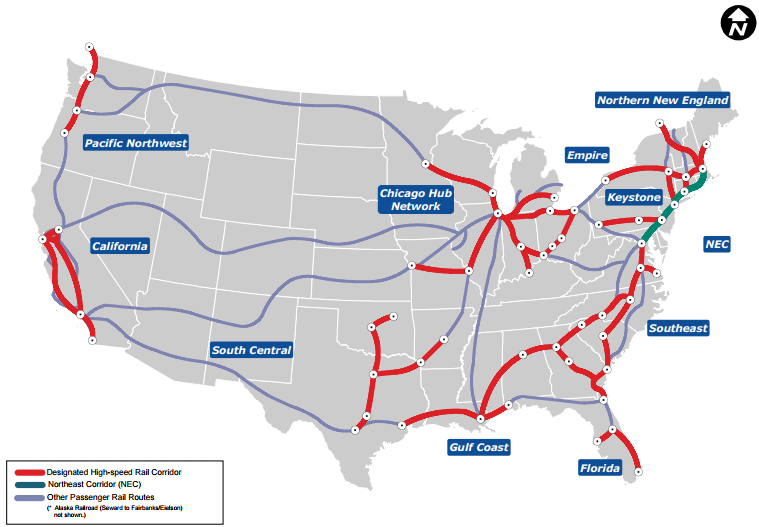
Florida’s Brightline
Florida’s privately-run Brightline service is moving forward with track upgrades to connect Orlando and Miami with 120 mile per hour service. To make the next leap to higher speed and to connect more cities, Brightline likely hopes for greater federal support. That said, Florida’s rail public-private partnership provides an alternative model for other regions in case public funding is lacking: combine rail projects with station-adjacent real estate projects to leverage private investment.
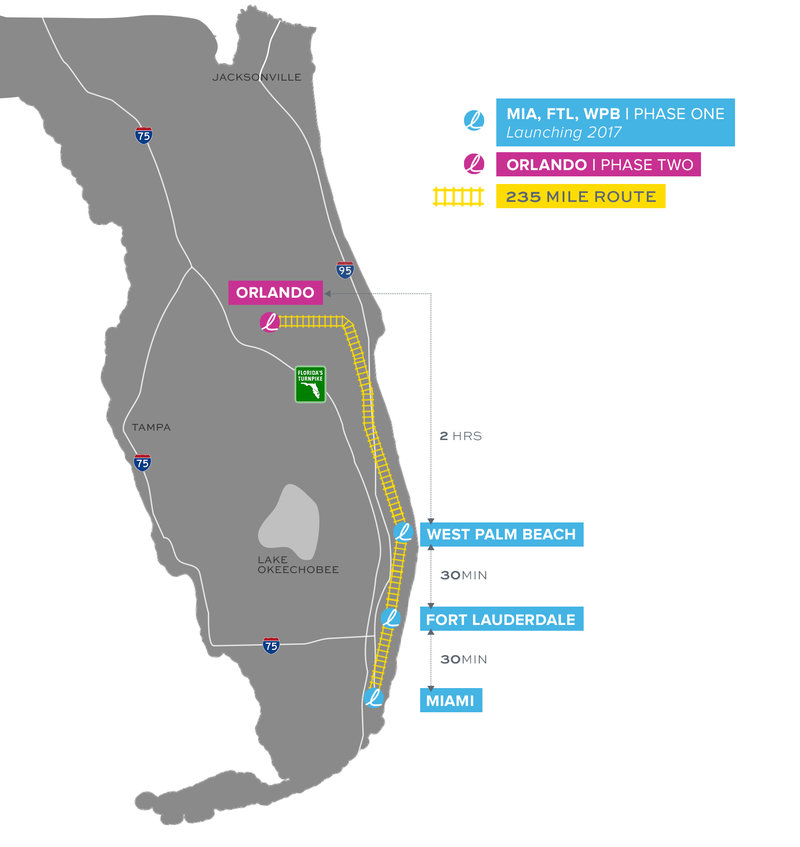
Downtown LA to San Fran in 2 Hours 40 Minutes
The Golden State meanwhile is forging ahead with California High Speed Rail, a plan to connect Los Angeles to San Francisco with 220 mile per hour service by 2029–that measure won $40 billion in funding via a state ballot measure passed in 2008. California could potentially use some help covering costs, which had ballooned to $64 billion by last count. When finished, the high speed line would provide two hour and 40 minute trips from Union Station in Downtown Los Angeles to Downtown San Francisco–faster than flying, which requires transferring to another mode to reach downtown.
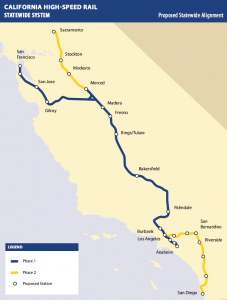
Early-Stage Regional Plans
How many states would be ready to make the leap to fund true high-speed rail service if the federal government provided matching funds? Oregon, Washington, and British Columbia have been exploring a Cascadia high-speed rail corridor connecting each state’s major metropolitan region, and King County Executive Dow Constantine is bullish. Texas has a plan to connect Dallas and Houston. And the Northeast’s already highly successful Acela corridor could use further upgrades to allow greater frequency and improve reliability and speed. And while Florida and California are getting the ball rolling on high speed rail networks with only limited federal support, they could be much more ambitious with greater support and get to later planned phases sooner.
Rail as Economic Engine
Passenger rail and transit investments could be the exclamation mark as some states are wrestled from Republican control. It’s easy to scapegoat transit, and Democrats have often been timid about advocating for big transit investments. Now could be time to seize the transit mantle more fervently as many Americans lament the lack of action on climate change and their own lack of transportation options in their city. Look to Wisconsin for an example of a state where we could turn the tables.
The Sorry Case of Wisconsin
Elected in the Tea Party wave of 2010, Wisconsin governor Scott Walker blocked $810 million in federal investment to upgrade tracks to provide a fast train from Madison to Milwaukee to Chicago. That block-headed, anti-transit move seems especially counterproductive as Wisconsin attempts to woo Foxconn into building a $7 billion plant near Racine without quality transit in the area. Governor Walker’s actions also stalled efforts to speed train service between Minneapolis with Chicago. Perhaps, Wisconsinites are growing tired of their conservative darlings, as even House Speaker Paul Ryan’s prospects of reelection are looking cloudy and Walker’s third term not a lock. What a dramatic way to retake the state, onboard a platform including high-speed rail and more TIGER grants to fund transportation projects like bus rapid transit (BRT) in cities across the country–cities including Milwaukee, Madison, Green Bay, and Kenosha.
Funding Metropolitan Mass Transit
High-speed passenger rail will be more successful when the destinations have high quality mass transit to help passengers get around once they reach their destination. That’s why the the United States should be expanding the TIGER and New Starts programs–which help light rail and BRT projects get off the ground–rather than cutting them like the last budget did. Cities across the county suddenly got really interested in transit when Amazon announced its HQ2 contest to pick another city for their second headquarters and highlighted transit quality as a criterion. The HQ2 example underscored how corporate preferences have clearly shifted to valuing mass transit–at least in order to attract talented professionals–and it’s a major factor when they pick which metropolitan to move to or leave.
If our government got ambitious for a change, we could also bring back the era of metro expansions. As recently as the 1970’s, the Federal Transit Authority was funding metro systems in Washington, D.C., San Francisco, and Atlanta. In the 1980’s, that money dried up as the government shifted more focus into pouring more money into never-ending Sisyphean quest to add more freeway miles. If we started investing in metro systems again, there’d be plenty of worthy candidates. Basically every American city needs help in this regard. Even cities with robust transit networks like New York and Washington, D.C. are experiencing the pains of aging and deferred maintenance. Other cities are just woefully behind on the basics.
Dallas’s Dire Need for Quality Transit
Dallas approved a downtown subway and is counting on federal money to keep the project on schedule to open in 2024. To build out Dallas Area Rapid Transit (DART), the city could use the boost in federal funding to make more urban-focused upgrades happen. Dallas provides an extreme example and warning against just haphazardly throwing down light rails lines in old industrial corridors instead of building to density and adding grade separation. DART has 93 miles of light rail yet manages an anemic 101,300 daily ridership. Seattle, in comparison, gets about 77,000 daily riders on just 22 miles of light rail–Sound Transit expects 600,000 daily ridership after its light rail system is built out to 116 miles. Houston–hardly a transit juggernaut–gets about 66,000 daily riders on its 23 light rail miles.
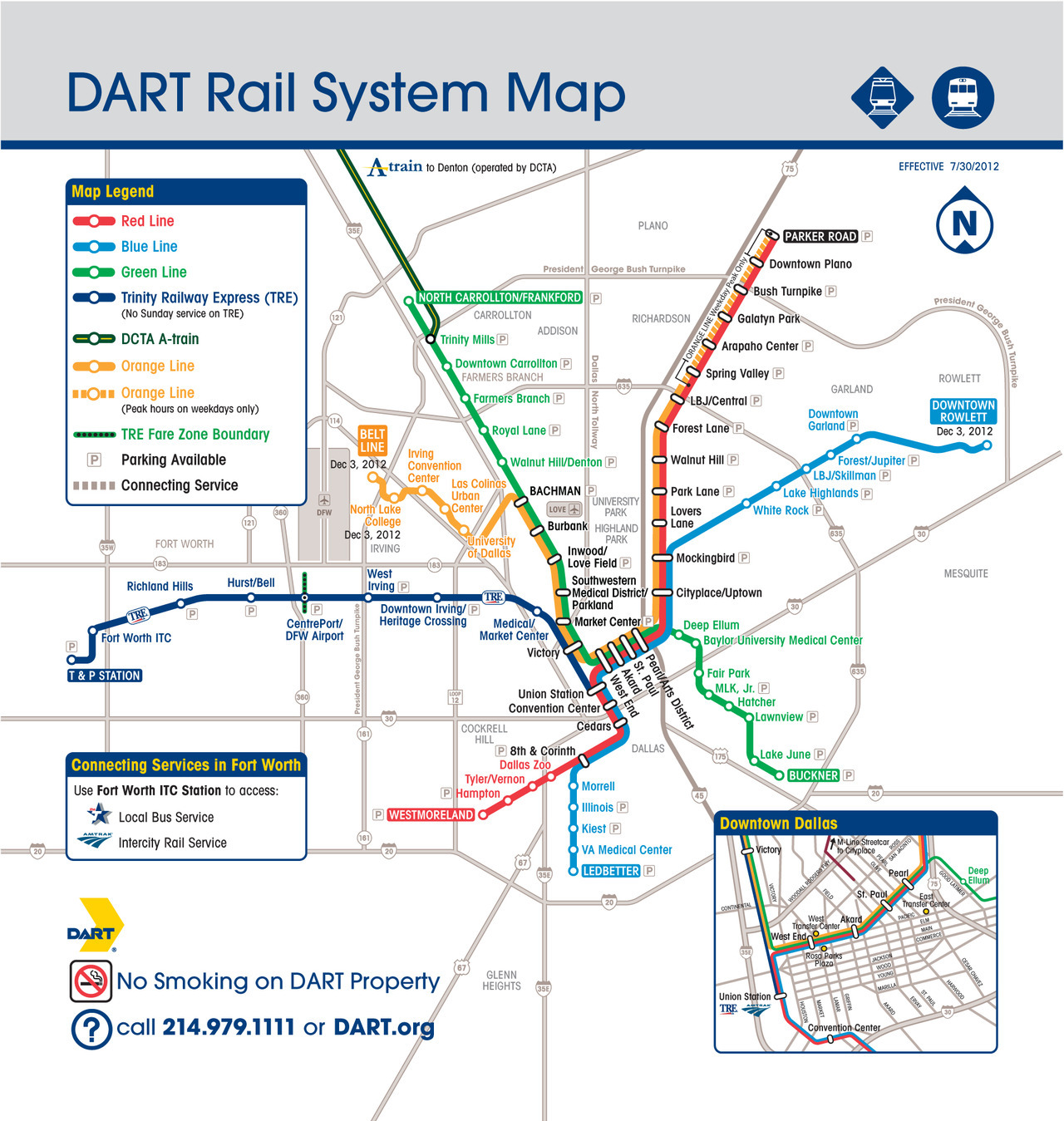
DART’s subway project should address a bottleneck the light system encounters downtown as its four lines converge and share a single pair of surface tracks. Grade separated underground tracks would allow greater frequencies and faster travel times through Downtown Dallas. It’s sad that a metropolitan area of 7.2 million people doesn’t have better transit, which has led to a pathetic transit mode share of 2% for the urbanized metropolitan region and 4% for Dallas proper. Major American cities having such weak transit should concern the federal government and anyone worried about climate change and equitable cities.
Speeding the Transit Transformation of LA
Los Angeles is another big American city known for its lackluster transit, but Los Angeles, like Seattle, passed a massive ballot measure in 2016 to jump start its slow to develop Metro rail network. The $120 billion over 40 years that Los Angeles voters approved could really turn things around and fill out its transit network. Stronger federal support for transit could speed up the pace of Los Angeles rail extensions–late or diminished federal grants are a major concern for this and many transit projects across the country.
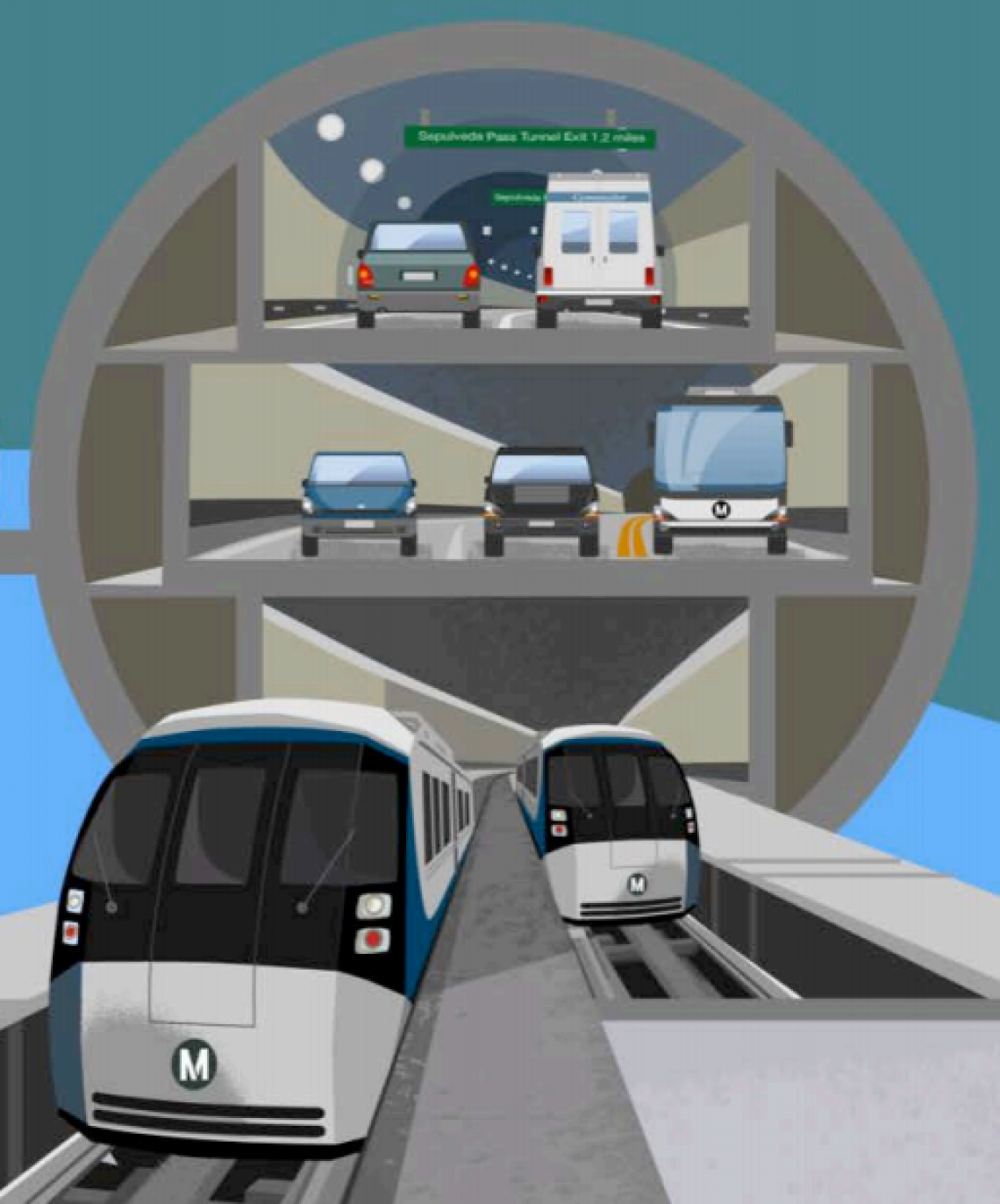
Most cities are unlikely to come up with anywhere near as much money as Los Angeles did, which is why the federal government needs to play a role. The incentive of larger federal matching grants could help many regions make the decision to invest big in transit.
Ride the Wave
If returning the federal government’s focus to urban transportation seems far-fetched, remember that Democrats are leading by double digits in generic ballot polls. Even with their structural advantages, their gerrymandering, and their assaults on voter rights, Republicans will have a hard time overcoming their tremendous unpopularity. If Democrats manage to present an even moderately inspiring alternative, Republicans may well lose control of the House of Representatives for the first time since the Tea Party wave in 2010. That inspiring progressive alternative could well be a huge infrastructure plan that would modernize our passenger rail network, upgrade our mass transit, and bring bus rapid transit to many mid-sized cities for the first time. It might sound crazy, but transit could really be a political winner nationally as more Americans are convinced of its connection to job growth and resiliency.
The featured image is courtesy of Amtrak.
High Speed Rail: The Right Kind of Infrastructure Investment
Doug Trumm is publisher of The Urbanist. An Urbanist writer since 2015, he dreams of pedestrian streets, bus lanes, and a mass-timber building spree to end our housing crisis. He graduated from the Evans School of Public Policy and Governance at the University of Washington in 2019. He lives in Seattle's Fremont neighborhood and loves to explore the city by foot and by bike.


